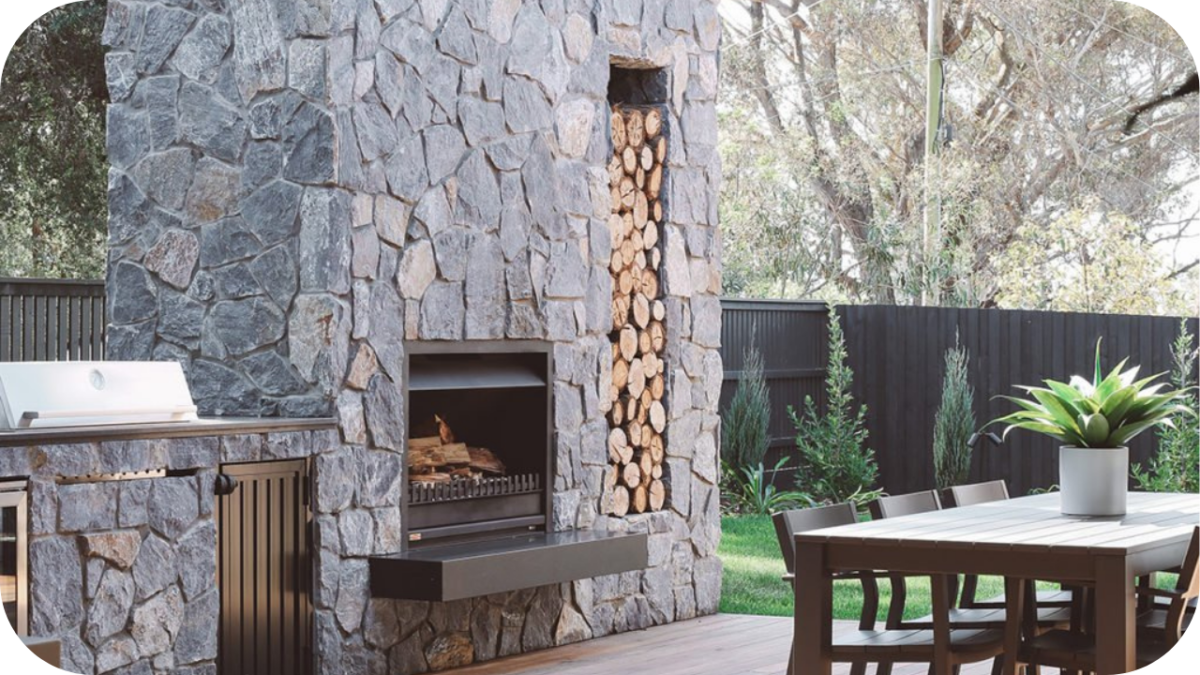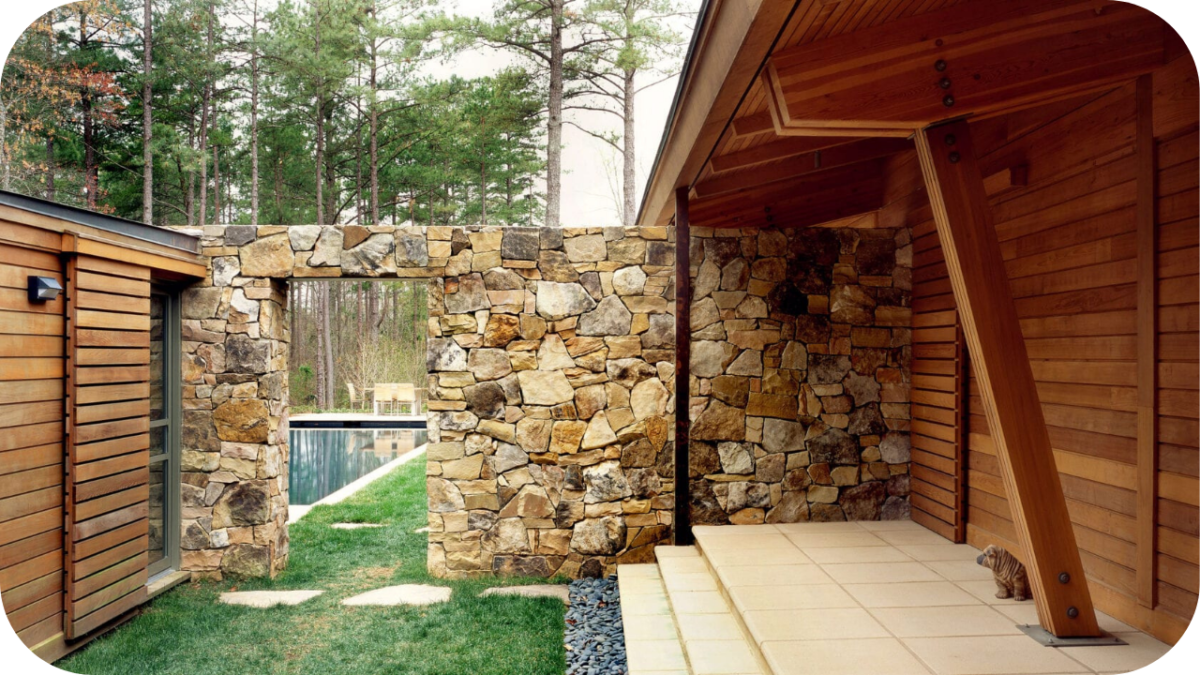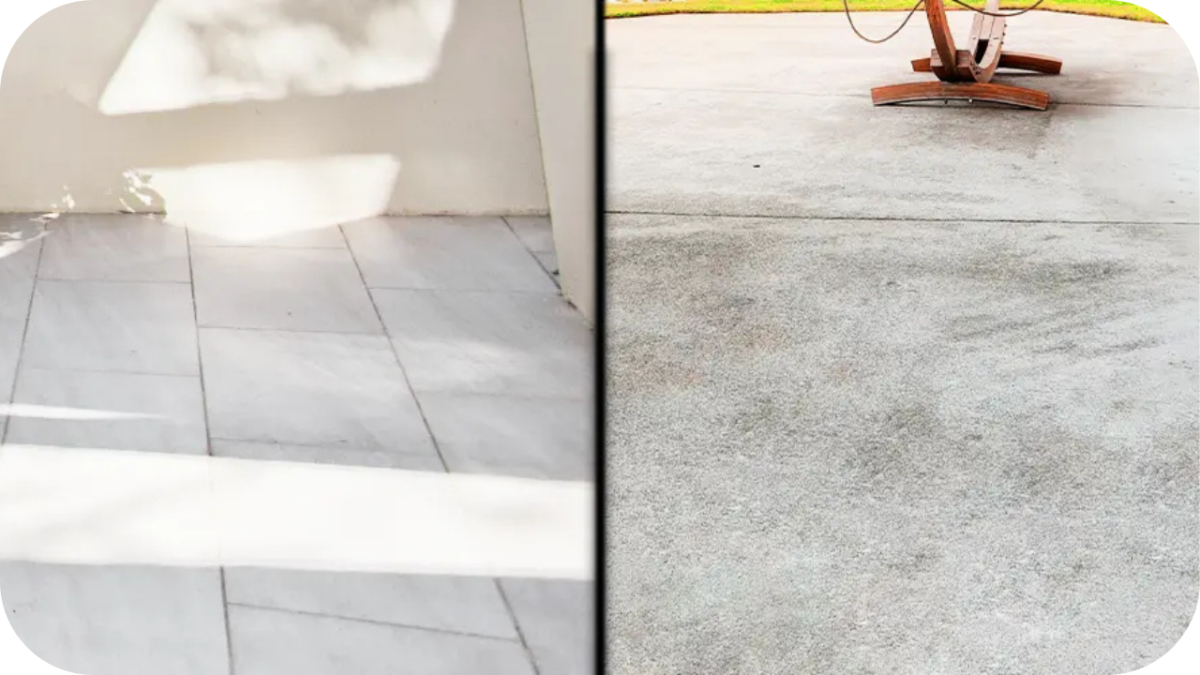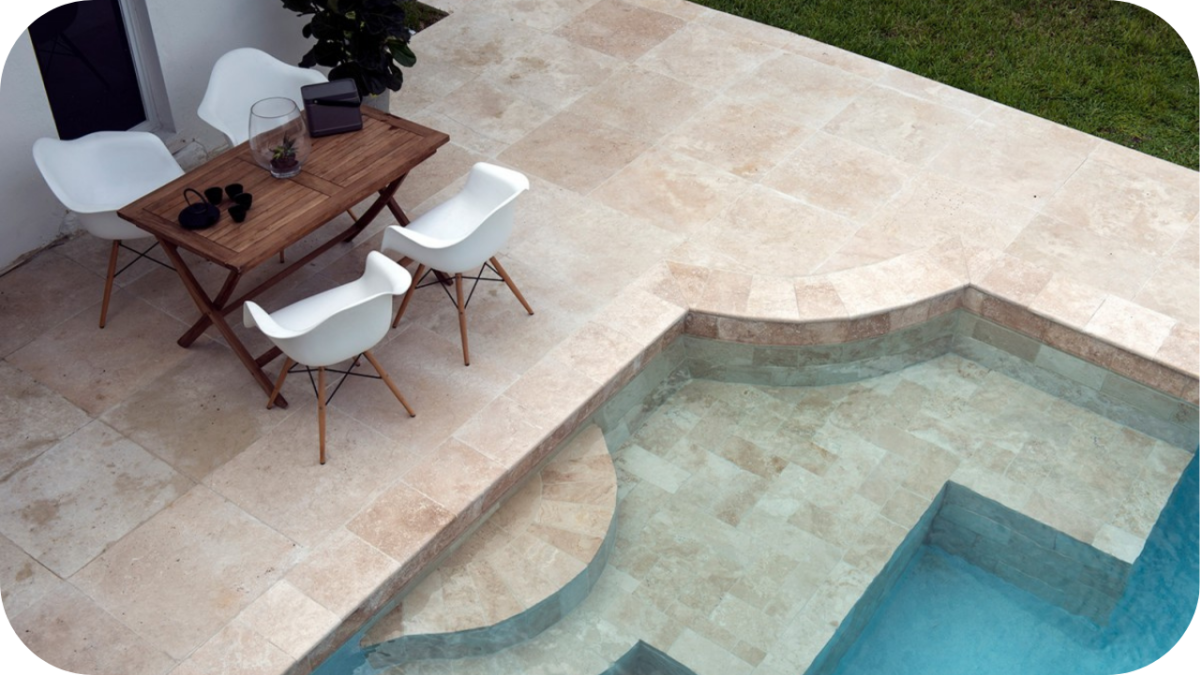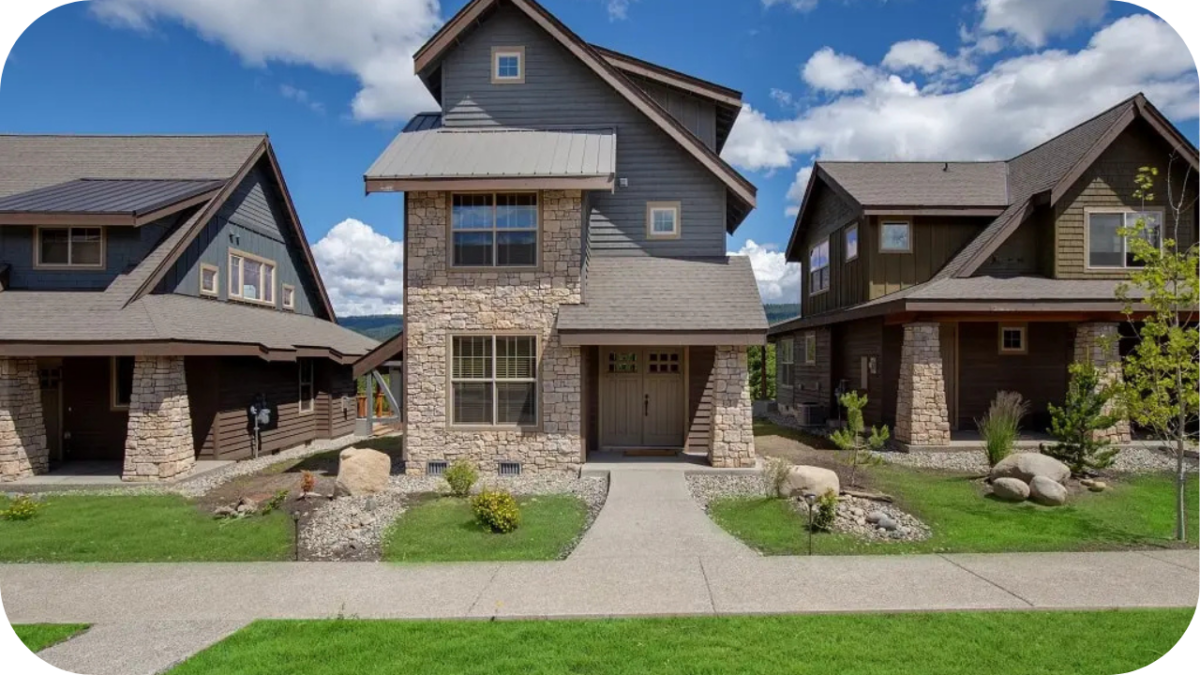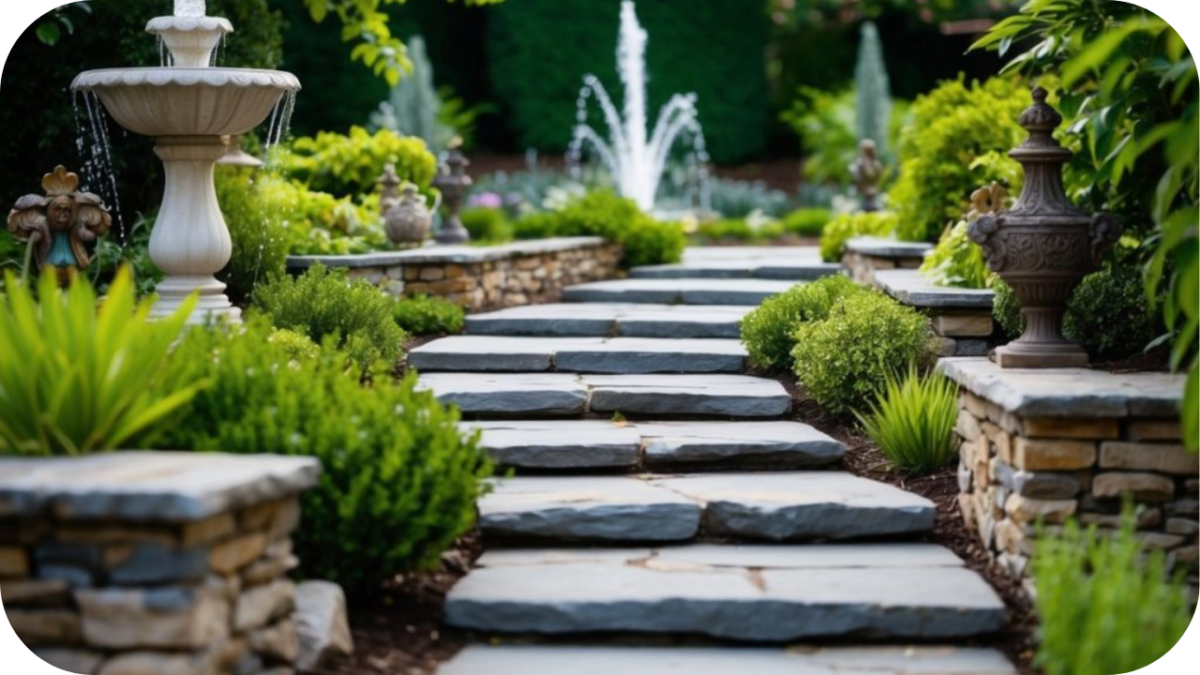Top Outdoor Trends for 2025: Why Natural Stone Wins
In 2025, outdoor living isn’t just about curb appeal; it’s about creating spaces that feel grounded, intentional, and lasting. Homeowners are embracing designs that prioritise sustainability, wellbeing, and low-maintenance luxury.
At the heart of it all? Natural stone. With its raw beauty and resilience, it’s becoming the go-to choice for modern landscapes.
Here’s a look at the trends shaping outdoor spaces this year and why stone leads the way.
Everyday Outdoor Trends You Can Use in 2025
While design headlines often focus on aesthetics, the true test of any trend is how well it fits everyday living. Natural stone continues to play a pivotal role in these practical trends. Here’s how it fits into the outdoor lifestyles of today’s homeowners:
1. Outdoor Kitchens as the New Heart of the Home
Outdoor kitchens are no longer a luxury. They are becoming a must have. More homeowners are creating fully functional cooking zones outside, complete with stone benchtops, built in barbecues, and even sinks or fridges.
Natural stone such as granite or bluestone, is ideal here. It resists heat, staining, and scratches while providing a visually striking surface that blends seamlessly with the surrounding landscape. It is not just about meals; it is about moments. These spaces are perfect for hosting family dinners, summer parties, or Sunday brunches.
With the right stonework, your outdoor kitchen becomes an extension of your lifestyle. It is durable enough for daily use and beautiful enough to impress guests. In 2025, this trend is about turning backyard cooking into a central experience that reflects modern living.
2. Sustainable and Eco-Conscious Landscaping
Homeowners today are more environmentally aware than ever. In 2025, there is a strong focus on choosing materials that are not only beautiful but also gentle on the planet. This is where natural stone excels.
It requires no chemical processing, and when locally sourced or reclaimed, it has a low carbon footprint. It is simply taken from the earth and placed into your outdoor space. Unlike synthetic options, it doesn’t deteriorate quickly or need replacing every few years. Granite pavers or sandstone steps can last for decades with minimal maintenance.
This durability reduces waste and long term cost. The rise in recycled and repurposed stone also adds to its appeal. Whether you’re creating retaining walls, paving a path, or building outdoor features, using stone is a conscious choice that balances aesthetics with environmental responsibility.
3. Earthy Organic Aesthetics
Designers are taking cues straight from nature. Cool greys from bluestone, golden tones of travertine, and rugged sandstone finishes all reflect a grounded aesthetic. Textures are raw, layered, and intentionally imperfect.
These earthy tones pair beautifully with native plants, timber furniture, and minimal landscaping. Whether it’s a feature path or a garden wall, natural stone adds instant warmth and character. The charm lies in authenticity. Every slab has its own look and feel, giving you a unique space that no synthetic material can replicate.
More homeowners are turning away from glossy, artificial surfaces and instead choosing stone that feels real and lived in. As this push toward natural design strengthens, stone leads the way with timeless beauty and a grounded, elegant finish that suits everything from compact courtyards to sprawling coastal gardens.
4. Seamless Indoor Outdoor Living
Homes are no longer divided into inside and outside zones. In 2025, living spaces flow naturally from one area to another. Natural stone makes this transition seamless. When the same or similar stone is used for both interior floors and outdoor surfaces, it creates a strong visual connection.
Limestone or travertine can begin in a living room and continue out onto a patio, giving the sense of one unified space. This design approach makes the home feel larger and more cohesive. Smooth finishes inside and lightly textured finishes outside ensure comfort without breaking visual flow.
Large sliding or folding doors further blur the lines, allowing outdoor kitchens, lounges, and dining areas to feel like natural extensions of the home. Natural stone brings structure and style to this evolving way of living, offering a foundation that ties everything together beautifully.
5. Wellness-Focused Outdoor Spaces
Gardens are now places for healing, mindfulness, and quiet escape. The focus in 2025 is on creating outdoor areas that promote wellness, and natural stone is a key part of that transformation. With its calming colours and grounding texture, stone invites tranquillity.
Soft stone pavers underfoot in a garden path or stacked stone walls around a water feature help establish peaceful environments. These are spaces where you can breathe deeply, slow down, and unplug. Unlike glossy tiles or plastic features, stone blends into the natural world and supports mental clarity.
Adding soft lighting and plant life around stone elements enhances this effect, turning patios or garden corners into sanctuaries. Whether you’re meditating, doing yoga, or simply enjoying a quiet moment, natural stone contributes to a sense of calm and connection.
6. Statement Features and Focal Points
Bold outdoor features are a must in 2025. Homeowners want more than just practicality they want showstopping design. Natural stone is ideal for creating features that draw the eye and anchor the garden. Picture a fire pit framed in rugged sandstone, a waterfall cascading over layered slate, or a grand entry path built with textured granite.
These are not just elements of convenience. They are works of art that bring personality and depth to your space. Because no two stones are alike, every feature is unique. Dark stones offer bold contrast, while lighter tones create a soft, coastal feel.
Whether you want something dramatic or serene, stone gives you the versatility to make it happen. It adds structure, beauty, and meaning all while standing strong against weather and time.
7. Smart Garden Integration
Outdoor technology is growing fast. In 2025, many gardens feature automated irrigation, remote lighting, and even app controlled sound systems. Natural stone complements this shift perfectly. Its classic look balances modern tech, creating spaces that feel warm rather than clinical.
You might install LED lights into stone steps, hide speakers behind stacked walls, or place sensors discreetly into stone pathways. The stone itself never goes out of style, so the base of your garden stays relevant even as technology changes.
Stone also conceals hardware beautifully, offering clean lines and natural texture. It acts as a reliable and attractive frame for lights, taps, and smart garden tools. This fusion of timeless material and smart systems creates spaces that are stylish, functional, and future ready.
8. Fire Pits and Outdoor Heating Zones
As people spend more time outdoors throughout the year, heating features are becoming essential. Fire pits, chimineas, and heated seating areas are being built into patios, courtyards, and gardens. Natural stone is the best choice for these zones thanks to its fire resistance and ability to hold heat.
Sandstone, granite, and slate add character while standing up to the elements. These installations are not just functional. They set the mood. Picture friends gathered around a glowing pit, wine in hand, the light dancing on textured stone. Incorporate built-in stone benches and soft cushions, and you’ve crafted a cosy, inviting outdoor lounge.
In 2025, heating features are not just seasonal additions. They extend the use of your garden and create stylish comfort year round. With natural stone, every element feels grounded and cohesive.
9. Pet and Family-Friendly Surfaces
Backyards needs to transform and handle real life. In 2025, homeowners want outdoor surfaces that are strong, safe, and easy to maintain. Natural stone offers the ideal mix of durability and design. Sealed travertine, bluestone, or limestone can withstand bikes, ball games, muddy paws, and garden mess. These materials are cool underfoot, which makes them especially good for young children and dogs.
They are also far more elegant than rubber mats or synthetic grass. Whether you are designing a courtyard where kids can play or a patio for your dog to lounge on, stone holds up without looking worn.
Unlike decking, it does not need staining or sealing every year. And unlike artificial turf, it looks better with age. This trend is all about creating a space that adapts to your family and still looks polished every day.
10. Natural Pools and Stone Water Features
Flashy tiles and bright blue pools are taking a step back. In 2025, water features are becoming more natural and calming. Natural stone turns a basic pool into a peaceful retreat. Think of a small plunge pool with travertine coping, or a slate waterfall cascading into a pond.
These elements feel organic and timeless. Beyond the aesthetic appeal, stone is practical. It stays cool in the sun, lasts in wet environments, and matches well with plants and timber. It also adds texture, sound, and movement, turning water into a multisensory experience.
Many homeowners are choosing mineral pools or pond style features with fewer chemicals. Paired with stone surrounds, these installations feel more like nature and less like a public pool. Whether you are building a luxurious garden escape or just adding a quiet corner, natural stone gives your water zones a grounded, wellness inspired finish.
11. Gravel and Stone Pathways for Low-Maintenance Gardens
Maintaining a traditional lawn takes time, water, and effort. That is why more homeowners in 2025 are turning to gravel and stone pathways as practical garden solutions. Natural stone creates paths that define space and reduce upkeep.
Flagstone, sandstone, or bluestone are excellent choices for walkways and garden zones. They are durable and weather beautifully. Unlike concrete, they allow rain to drain naturally, which helps the soil and prevents pooling.
These paths pair perfectly with native plants, mulched garden beds, or decorative pebbles. They can guide you through a space, divide outdoor areas, or simply add character. This trend is about letting your garden breathe without feeling overdesigned. With stone underfoot, your outdoor space becomes easier to maintain and more enjoyable to use every day.
12. Rustic Outdoor Showers and Stone Privacy Screens
Outdoor showers are moving beyond holiday homes and becoming a regular feature in everyday backyards. In 2025, more households are adding rinse areas for pool goers, pets, or post-gardening refreshment. Natural stone is essential to make these spaces feel considered and private.
Stacked stone walls or textured screens add privacy and beauty without needing painting or upkeep. Travertine and slate are popular for their soft tones and resilience. When paired with timber decking and leafy planting, you get a shower zone that feels like an outdoor spa. These spaces are practical, but they are also an experience.
It is about stepping into nature, feeling grounded, and washing off the day. Stone elevates the look and makes the structure feel permanent. In the age of wellness, this small upgrade can add big value and style to your home.
13. Container Gardening with Stone Backdrops
Urban gardens are getting creative. In 2025, container gardening is becoming the go-to solution for growing plants in compact spaces. But it is not just about what you plant but about where you place it. Natural stone backdrops provide visual contrast and thermal benefits for raised beds, pots, and planters.
A rough limestone wall or stacked granite feature makes greenery stand out and gives your courtyard a structured, layered look. These materials also retain heat, helping some plants grow more evenly. From herbs to succulents, everything looks better with a bold stone setting.
Even in small yards or balconies, container clusters can create lush, dynamic environments. This trend works especially well for renters, downsizers, and anyone who wants flexibility. With stone cladding or pavers as your foundation, even the simplest garden feels rich, intentional, and grounded in nature.
Conclusion
Outdoor trends for 2025 are all about natural connection, longevity, and low-maintenance luxury. Natural stone delivers on every front. It brings texture, elegance, and timeless value to modern gardens without the upkeep headaches.
Whether you’re designing for relaxation, tech integration, or bold aesthetics, stone sets the foundation for it all. Looking to elevate your outdoor space? Make it future-proof, beautiful, and built to last. Start with natural stone from Splendour in Stone.



